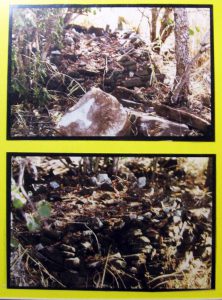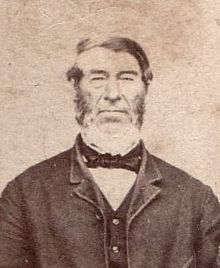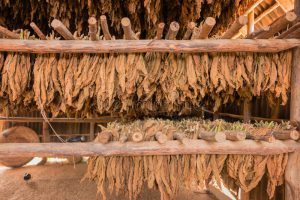The History of the Ohrigstad Valley
The Iron Period
(200AD – 700AD)
All the artifacts displayed in the show cases inside The Shoe were taken from a shallow cave about 300 meters up the mountain from where The Shoe is standing now. The previous owners, Mr Ron van Zyl and Mr Johan Vlok started digging into the shallow cave and this is what they found. According to the archaeologist Helgard Prinsloo these artifacts date back to the Iron Age, 200 – 700 AD.
It is believed that The Pedi (Bapedi) people, today known as Northern Sotho’s, stayed in this area during the Iron Period for about 500 years and then left. Where they came from is unclear. Some people talk of a Western and Eastern stream as they came from the North.

Throughout other parts of Limpopo, Mpumalanga and even Kwazulu Natal various articles and sites have been identified as areas where people lived during the Stone and Iron Ages. Not only were iron implements found but also various earthenware. These people mined for iron and knew how to melt it. They were self sustaining; planted somewhat and traded livestock with the neighboring communities.
This particular site on this property was believed to be used for two purposes. A large amount of cattle and other animal bones were found leading us to believe that the shallow cave was used to hide stolen cattle in. Secondly the stone piles outside the cave shows that cultural initiation was done at this site. (Read more about the initiation process here)
After the children came out of the initiation process they got to add their stone to the pile, indicating that they were now considered adults and part of the community. Many deaths occurred during this time. The scull in the smaller display case is proof of that. The small clay pots in the large display case was found at the deepest level of the cave and is believed to have belonged to a Witch doctor. Exactly when the Pedi people abandoned the area is not known.

Andries Hendrik Potgieter (Dutch Voortrekker Leader) left the Cape Province permanently in 1835. He was convinced that they needed to get away from British rule and find a route to Delgoa Bay (Taday called Maputu). In 1838 he established Potchefstroom. In 1843 a trading ship from the Netherlands belonging to Gregorius Gerhardus Ohrig landed in Delagoa Bay after shown away by the British in Cape Town. Mr Ohrig’s Captain and admin clerk, J. A. Smellekamp sent messages to all immigrants to come and meet him to discuss trade opportunities. In 1844 Andries Hendrik Potgieter arrived in Delagoa Bay and was informed by Mr Smellekamp that they should settle themselves North of 26 degrees and further than 4 day’s travel from Delagoa Bay. So they did. On 5 July 1845 the Bapedi Captain Sekwati signed a contract with Potgieter giving them all the land between the Loeloe Mountains and Swaziland in exchange for defense against Mswazi.

So the town of Ohrigstad came into being. Malaria was a problem and just as quick as the people came, they quickly moved back West and so Lydenburg came into being. The name ‘Lydenburg’ came from the suffering of loosing so many people to the ‘fever’. Not many people stayed in the Ohrigstad valley. It was only after the Anglo – Boer war (1899-1902) that people from the High Veld (JHB) came to Ohrigstad after loosing their farms. The Government started fighting Malaria round about 1920’s.
Our Great Grandmothers still remember how the woman and children stayed on top of the mountains during the summer months to get away from the mosquitoes.
Back then this very fruitful valley was covered in grass and water came out of the mountains. Eventually with ploughing and burning of the land the trees took the place of the grass, the water level dropped and it became a dryer area. It was only after the First Wold War in 1918 that farming took on a better shape. The Farmers mainly planted Wheat, Maize, Barley and Tobacco. The farm lands in Ohrigstad are all under irrigation. 70% Of the districts water supply comes from the Ohrigstad –, Spekboom –, Sabie and Oliphant’s Rivers, the rest uses boreholes.

This immediate area around The Shoe (Branddraai) planted allot of Tobacco during the middle and late 1900’s. You can still see all the tobacco barns standing around in which they hanged the tobacco to dry. Somewhere during the 1980’s the tobacco industry fell flat and the farmers had to change back to wheat, maize and dry beans. Today a large percentage of Branddraai is covered with citrus for export purposes.
The tarred roads were started in 1965. Along with it the first Telkom lines and eventually around 1985 Eskom (Efkom) brought the first power lines.

Leave a Reply